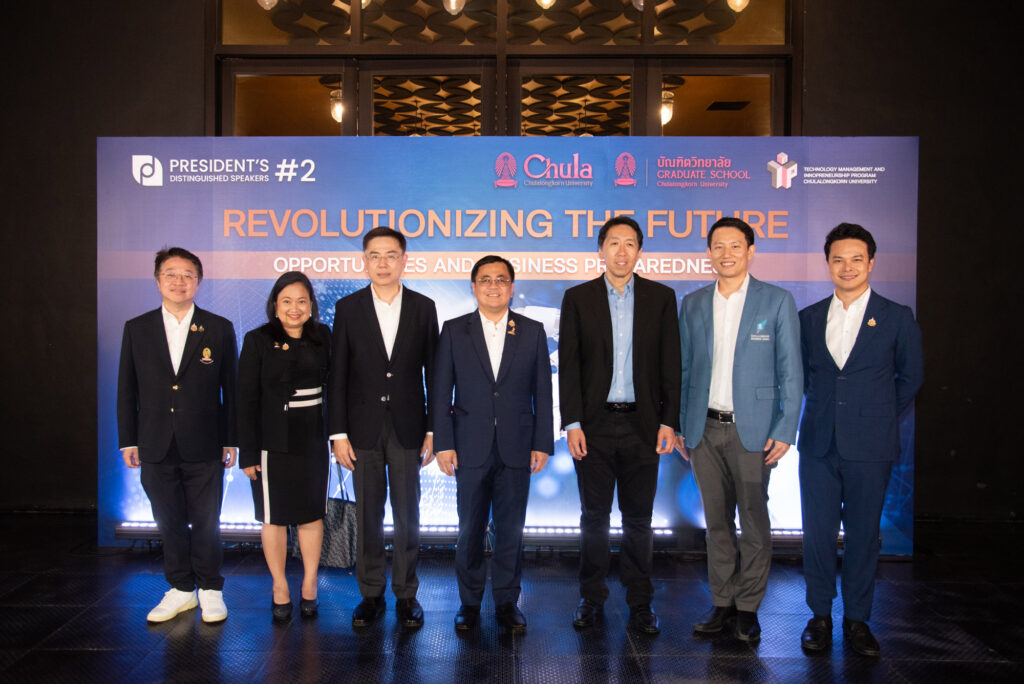Chulalongkorn University has now opened a Center for Health and Well-being Promotion for Older People at the Faculty of Nursing to offer complete support for an aged society. Applying new knowledge from research findings and multidisciplinary collaboration, providing comprehensive care for frail older people, helping them maintain their functional abilities and become more self-care, ultimately improving their quality of life.
Having to go to work every day and leave his 72-year-old mother home alone was a big worry for Mr. Kriangsak Kunwiramkul. “Will my mother have a fall? Will she feel lonely? I wanted her to engage in some outdoor activities and meet other senior citizens,” said the 47-year-old businessman.
He then heard the news that there is now a ‘Center for Health and Well-being Promotion for Older People’ had been established on the 10th floor of the Boromarajonani Srisataporn Building, Faculty of Nursing, Chulalongkorn University. Without hesitation, Khun Kriangsak took his mother to apply for the service and went to work with a greater peace of mind. On Wednesday, Thursday, and Friday mornings, he would drop his mother off at the center, and in the evening, after work, he would pick her up so they could go home together.
“During the 2 months that my mother came to enjoy the services here, I could detect a clear change in her: she seemed more lively and joyful. Her favorite activities were dancing and singing. They also offer classes that provide knowledge about preventing falls in older people.”
Khun Kritayapat Ananwirakun is another person who brought her 86-year-old mother over to the Chulalongkorn University Center for Health and Well-being Promotion for Older People.
“As her children, we are now relieved to have a center to take care of our mother who is now engaged in many activities, such as exercising and singing. It makes us happy to see her smile and laughter when doing those activities. The center would send pictures to us via the LINE group. Mother has been able to meet old friends from university who she hadn’t seen since graduation, but who met again at the center and joined in doing activities together. This has made her very happy.”
The Center for Health and Well-being Promotion for Older People has succeeded in not only bringing smiles to older people, but also joy to many working-age children. They can rest assured that they can now leave their loved and cared-for older people relatives in the care of professional nurses, students, and occupational therapists who will help make their days happy, instead of spending their time in loneliness at home.
How it all started
Since 2023 Thailand has entered the stage of a complete aging society, with more than 20 percent or 1 in 5 of the total population aged 60 years and over. The number of older people aged 80 years and over is increasing rapidly by an average of 7 percent per year. This rapid increase in the number of older people, along with a smaller family structure and current economic conditions that force working-age people to work outside the home – these factors have made it necessary for the children to find help. Many older people care businesses have therefore emerged in recent years.
However, the current care facilities for older people focus on two groups of people:
The older people who are still strong (active aging) and able to help themselves
The group who are dependent, have little ability to help themselves or are bedridden.
“There is a need for a center that focuses on the frail older people who can take care of themselves but are starting to encounter more health problems and are becoming more homebound. Older people with underlying or chronic diseases must rely on their children and family members to take care of them closely. Those who are home alone while their children go to work are at risk of health problems such as falling, tripping, or depression, which can cause older people who are healthy for their age to become bedridden later on,” said Associate Professor Lt. Col. Dr. Siriphan Satsat, Faculty of Nursing, Chulalongkorn University, Director of the Center for Health and Well-being Promotion for Older People (CHWPOP), Faculty of Nursing, Chulalongkorn University, regarding the origin and goal of opening the center, which is in line with the policy of the faculty’s management team that emphasizes providing services to support the aging society.
“We want to provide needed care and develop the potential of this group of older persons to return to being a healthy older person. If they are unable to do so, we will help slow down the deterioration of their bodies so that they can take care of themselves for as long as possible and not become dependent and bedridden.”
Business Model for Day Care for Older People
“Currently, daycare services for older people have gained more attention. More and more such service centers have been established by private and government agencies, each offering different service rates and a range of services. The increasing number of day care services may reflect a lack of caregivers’ knowledge and skills in providing proper care for older people,” said Assoc. Prof. Capt. Dr. Siriphan.
“We are the only full-service day care for older people operated by the Faculty of Nursing in a university in Thailand. We are well-equipped in terms of knowledge in Gerontological nursing from research studies, a curriculum for teaching nurse in adult and gerontology, and personnel with knowledge, expertise, and skills in caring for older people,” Assoc. Prof. Dr. Siriphan enumerated the strengths of the Center for Health and Well-being Promotion for Older People, Faculty of Nursing, Chulalongkorn University.
“The services at the center encompass physical, psychosocial, spiritual, and environmental health care. We use research-based approaches and collaborate with multidisciplinary teams at Chulalongkorn University to apply research findings to experiments and develop sustainable innovations in senior care. In addition, we aim to create a business model for caring for frail older people in urban areas, with a strong focus on their needs.”
The center provides academic services and conducts research on older people while also organizing various training courses on caring for older people for healthcare personnel and other interested groups in society. Most importantly, the center serves as a model for providing care for older people through a day care facility aimed at enhancing the quality of life of older people and their families.
Since the center opened in January 2024, many agencies from both Thailand and abroad have visited to study and learn from the center.
Caring for Older People: Building Immunity to Vulnerability
Currently, the center provides services for 15 older people per day and provides services 3 days a week, Wednesday, Thursday, and Friday. Older people who are interested in receiving services at the center must first undergo a health assessment.
“We will assess whether an older person is beginning to experience frailty, such as decreased muscle strength, slower walking, unintentional weight loss, feelings of weakness and exhaustion, and an increased likelihood of becoming homebound or bedridden. We will also evaluate their health conditions, including multiple underlying diseases, dementia, depression, fall risk, nutritional status, urinary or fecal incontinence, and their level of care ability,“ explained Assoc. Prof. Dr. Siriphan.
The center will then process the data to propose appropriate care for older people and provide advice, such as improving health behaviors, increasing muscle strength, stimulating the brain, and providing knowledge, consultation, and skill training in caring for older people for caregivers.
A second home for older people, complete with fun activities that promote good health
Asst. Prof. Dr. Siriphan described how, at the Center for Health and Well-being Promotion for Older People, many activities will help develop the skills and capabilities of older people in all aspects, such as providing knowledge for health, introducing new friends, stimulating the brain and memories each day, with music therapy every Wednesday afternoon, cooking activities every Thursday, and Qigong physical and mental training activities on Fridays.
“These activities help improve the quality of life of older people,” said Assoc. Prof. Dr. Siriphan, who also provide examples of health-promoting activities. These include music therapy, which stimulates body movement, brain and sensory function, and enhancing concentration and relaxation. Art therapy and games, such as handicrafts and creative activities, provide enjoyment and relaxation, promote imagination and creativity, improve concentration and hand-eye coordination, strengthen fine motor skills, encourage social interaction, and build self-esteem. For those experiencing memory decline, these activities can help enhance memory, improve cognitive and perceptual efficiency, reinforce a sense of identity, create a meaningful life, reduce depression, and help promote social skills. In addition to offering various activities, the center also designs spaces and creates an internal atmosphere for older people to feel like they are in a “second home.”
The center is equipped with bathrooms, a kitchen, a fitness room designed for older people, and a multi-sensory stimulation room that engages vision, hearing, smell, and touch. This environment promotes relaxation, enhances emotional well-being, and encourages positive behaviors, contributing to more restful sleep. Additionally, there is a “Coffee Room” a welcoming space where older people can converse and reminisce about past experiences, stimulating memories and emotions. Frequent engagement in these activities helps reinforce recollections, improving memory and cognitive function. The center also features a green area where older people can enjoy gardening, promoting physical activity and relaxation.
Assoc. Prof. Dr. Siriphan explained that all activities and the design of the space in the center are a product of the collaboration of Chulalongkorn University lecturers, experts in various fields at Chulalongkorn University, such as designing for the safety of older people by
Music therapy for older people is provided by the Faculty of Fine and Applied Arts, while appropriate nutrition and exercise guidance are developed in collaboration with dietitians from the Faculty of Allied Health Sciences and experts from the Faculty of Sports Science. To facilitate travel for older people, the center will work with transportation companies to ensure convention and safe transportation to and from the center.
The personnel providing services at the center include faculty members specializing in gerontological nursing, professional nurses, and master’s degree students specifically trained in this field. Guest speakers are also invited to provide knowledge to older people on various topics, such as dementia prevention, safe use of technology, herbal medicine, and overall health. Each month, health assessments are conducted, and advice is provided to relatives and caregivers to help them care for older people at home.
Chula Day Care addresses the needs of older people and their children
According to Assoc. Prof. Dr. Siriphan, the target group of the Chulalongkorn University Center for Health and Well-being for Older People focuses on retired Chulalongkorn University lecturers and staff, relatives of Chulalongkorn University lecturers and staff, senior citizens living around the university, and senior citizens who are travel to the center by themselves or can be dropped off by relatives, such as Khun Sompong, 82 years old, who travels by public transport. Sometimes, the grandchildren would pick her up and drop her off at the center.
“The time I spent participating in various activities at the center was filled with happiness and warmth. I made friends and had fun, so I never felt lonely. I enjoyed all the activities that were organized and also gained knowledge about exercise and how to take care of my physical and mental health. Commuting was convenient – I traveled by BTS Skytrain, but sometimes my grandchildren would pick me up and drop me off.”
Khun Poonsin, 82, said that her son encouraged her to use the services at the center, and she was impressed by the variety of activities organized for older people. “Coming here, I get to meet friends my age, so I don’t feel lonely. I enjoy all the activities, especially the cooking session every Thursday. I get to cook and taste the food I prepare myself. Experts also come to give lectures and provide valuable health care knowledge. I am truly impressed by the lecturers and staff who take such good care of me.”
Center for Health and Well-being Promotion for Older People, Faculty of Nursing, Chulalongkorn University, has received a license to operate a health establishment under the Health Establishment Act B.E. 2559, a business in the category of caring for older people or dependent people from the Ministry of Public Health. The feedback from older people who have used the services has been very good. The evaluation results gave a high score of 4.98 out of 5.
If an older person is starting to feel lonely, doesn’t want to go out, and you want them to stay active, make new friends, and maintain their independence for as long as possible, please visit the Center for Health and Well-being Promotion for Older People at the Faculty of Nursing, Chulalongkorn University. It is open three days a week – Wednesday, Thursday, and Friday – from 8:00 a.m. to 4:00 p.m. The cost is 500 baht per visit, including lunch and snacks.
Reservations can be made in advance at telephone number 06-1238-2322
For further information, follow us on Facebook at Chulalongkorn University, Center for Health and Well-being Promotion for Older People.
Read more at: https://www.chula.ac.th/en/highlight/220239/




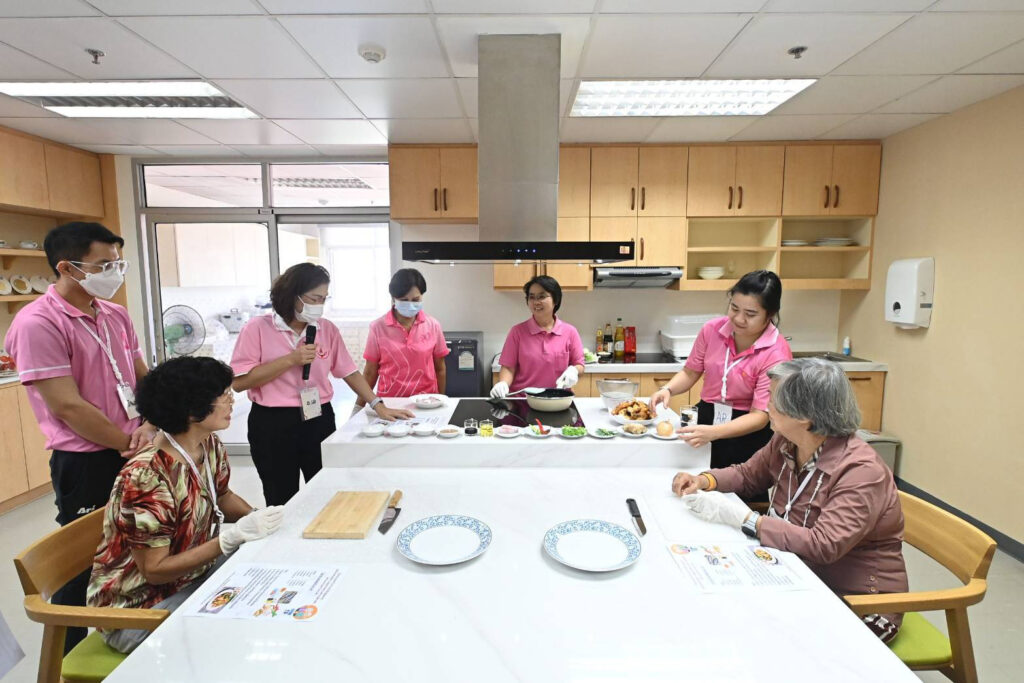
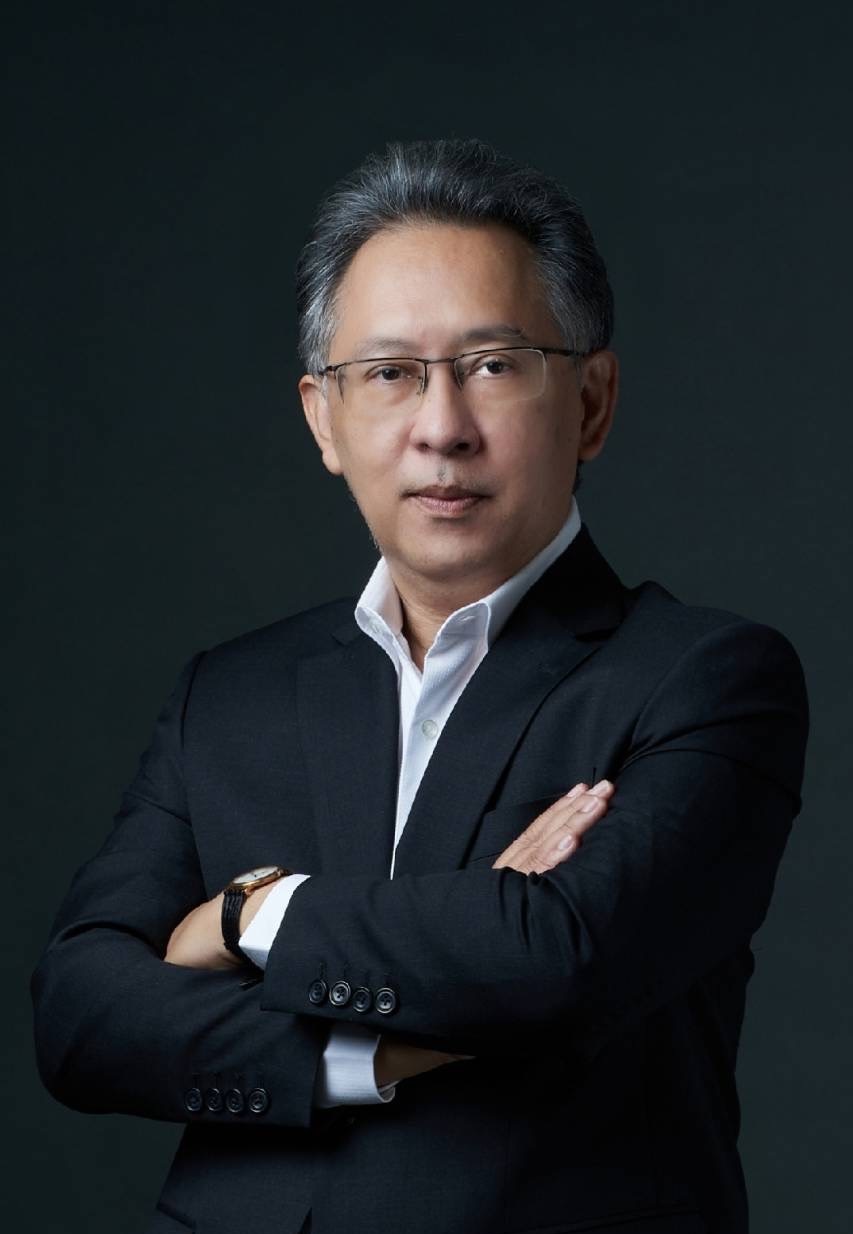
 (10)_0.jpg)
.jpg)
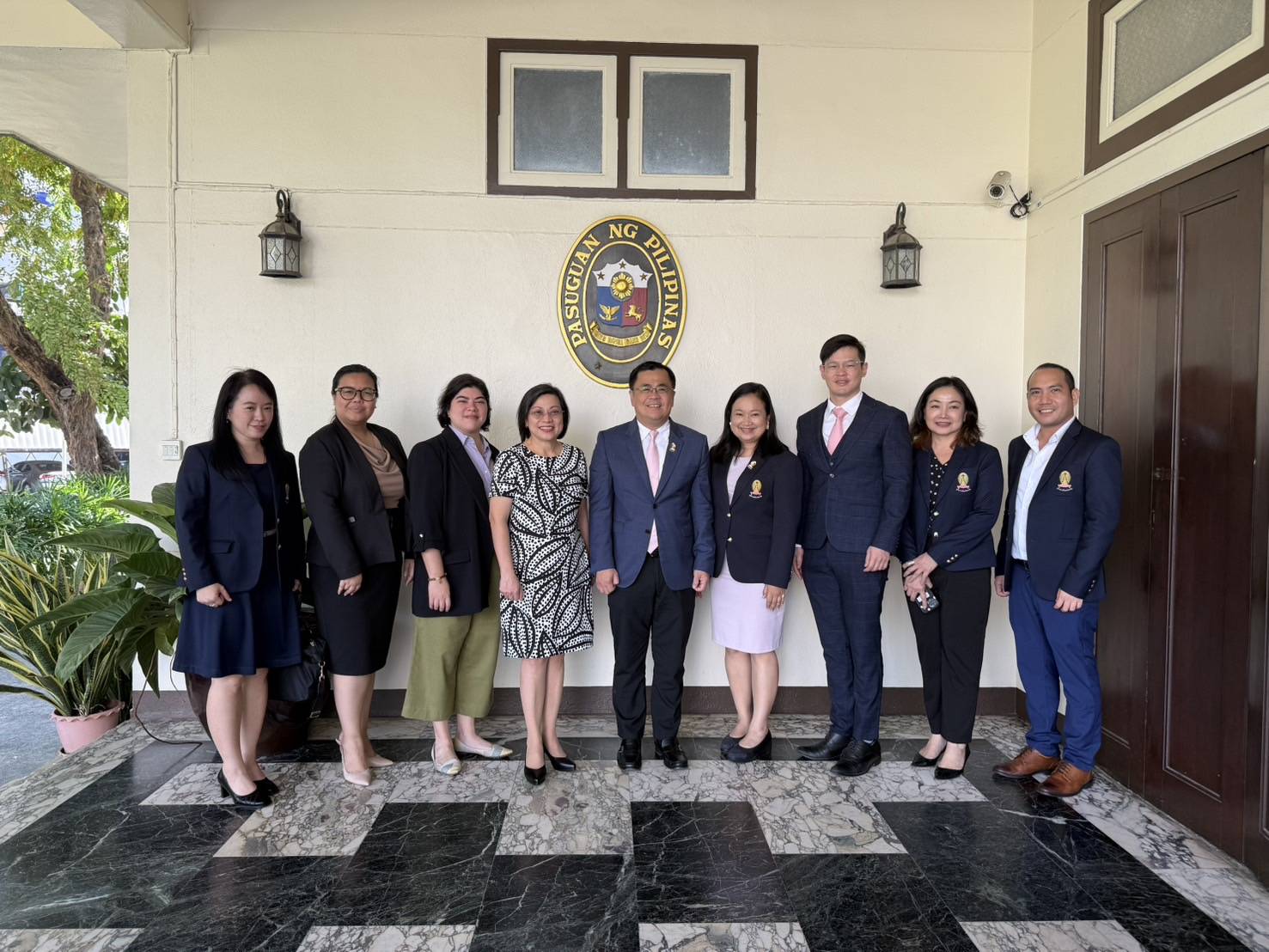
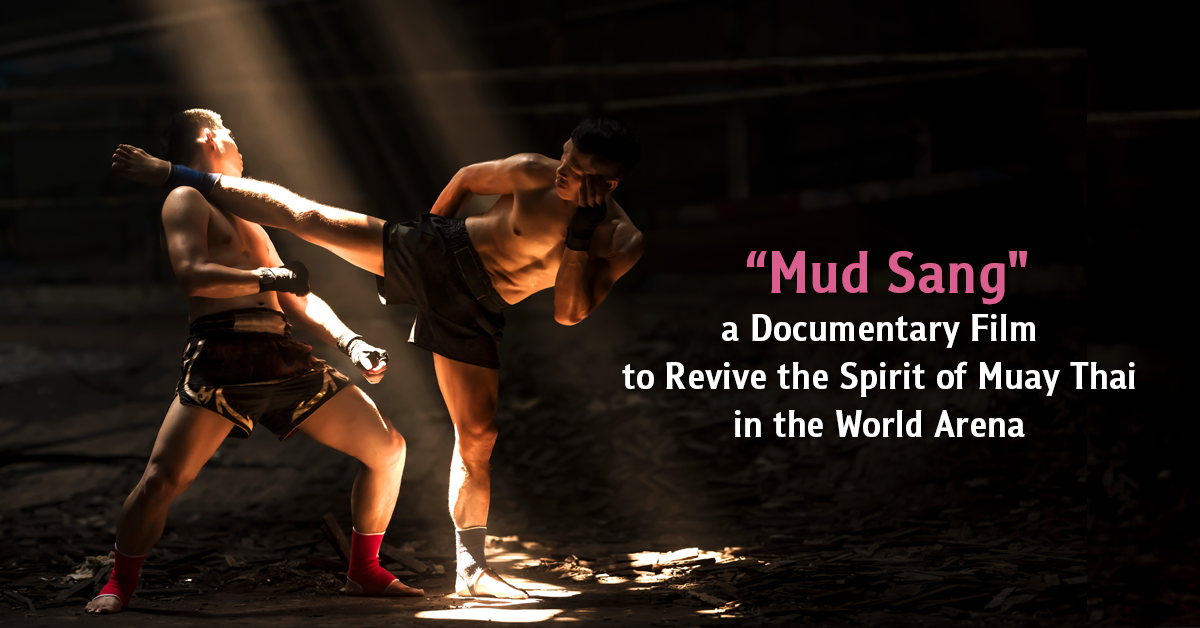
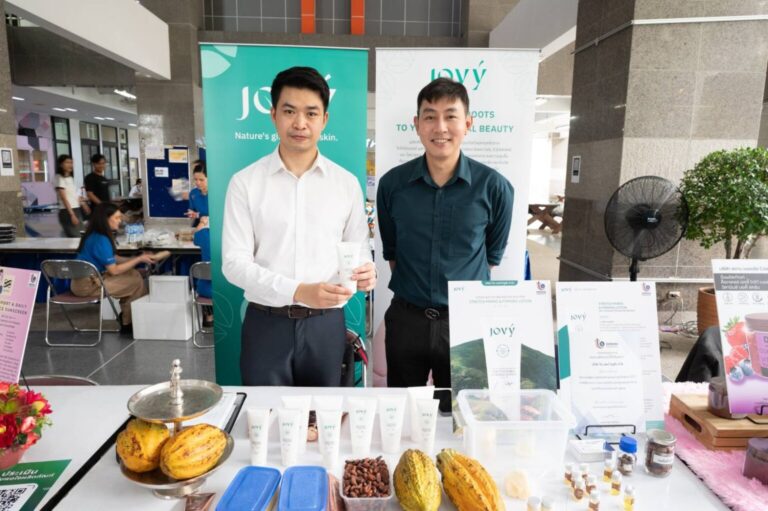

.jpg)
